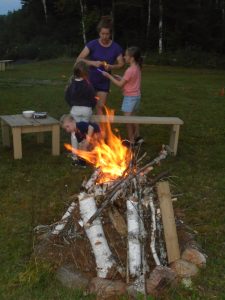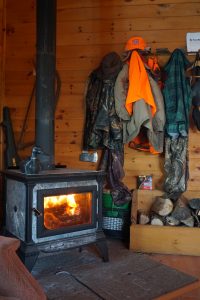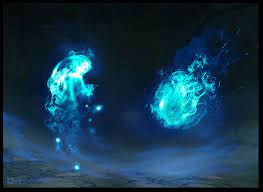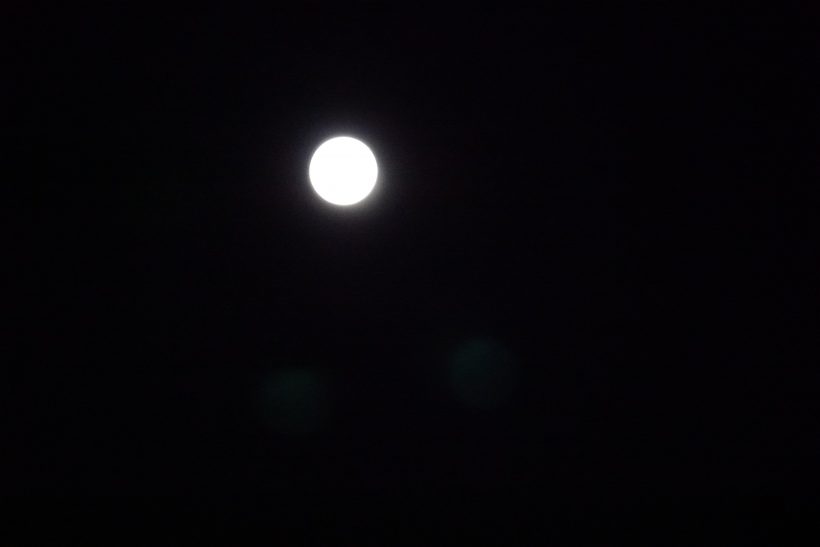LET THERE BE LIGHT by Ralph Bice
From December 20, 1978
Light is one of the very first things mentioned in the Volume of the Sacred Law. Almost at the beginning of creation we are told that the Maker said, “Let there be light.” Much further along in the Beatitudes we are advised to “Let your light shine… that others may see your good works and glorify your Father who is in Heaven.” So, light has been with us since the beginning.

No doubt early man, after discovering fire, also realized that fires produced light for seeing after dark. Many times we have read about early pioneers having no light except from their open fireplace. Then, we do not have to go back that far for when members of my family who went trapping ever since l have been around had no light at night except the glow from a fire which would be at one end of their small trapping camps.

Going way back it is easy to understand that people would soon notice that parts of trees produced more light and these were used for torches. One would be the fat or very resinous pine. They make great kindling as well. About fat pine.
I can remember when l was quite young (l have a long memory) when the men went for their annual fall fish harvest. Such a method would be frowned upon today but it was quite common seventy years ago. Lake trout spawn in the fall and the fish were taken by spearing. There was a large wooden boat, called a pointer, because it was pointed at both ends (bow and stern) left on the lake by lumbermen. The fishermen rigged a container of some sort at either end no doubt of metal as there would be collected a quantity of fat pine. There was a fire at each end of the pointer and the craft was guided to the shoals where the fish had arrived to spawn. They would be attracted by the light and there would be perhaps four men on each side of the boat, each with a spear, and this was the way they collected armloads of fish.
In those far away days the only house lights were the old coal oil lamps and lanterns. Compared with today’s high prices coal oil was quite cheap but still had to be bought and it was not wasted. The first winters l worked in lumber camps here would be just a few of these lamps. The teamsters each had a lantern, and the last thing they would do at night would be a trip to the stable to make sure their horses were well taken care of. Then, first thing in the morning, at least an hour before the rest of the crew were awakened, these men would be back to the stable to feed their teams so they would be ready for the day. Children today do not see horses as persons my age did. Too bad. I was told of one team, owned by a farmer, who did a lot of work after dark. Believe it started with ploughing and since he would have to see the way he hung a lantern in front of the horses. They got so used to doing work after dark with a lantern hanging from the front of the tongue that they would not budge without their lights.
There is no account of the early native Indians of Canada having any form of night light. The Eskimo (Inuit – Ed.) had discovered that seal oil in a small container no doubt carved out of Soap Stone, with some tightly twisted fur or hair, would produce light for their long nights.
Another oil was sperm oil; l imagine from sperm whales. I can recall small lanterns with a shield that could be closed, that gave light from sperm oil.
Years ago, those of us who lived so far back in the woods depended a lot on venison for meat. Many deer were killed by jack lighting. Now the light used was from a small bottle, an ink bottle if possible. A birch bark tube was made, large enough to sit on the head of a hunter. Four small branches were inserted to hold the bottle of oil and a hole cut so that light would shine in front. There would be a piece of rope in the bottle to act as a wick. These lights would not show too far ahead but as most know a creature’s eyes reflect light at a great distance and deer, like most animals, are attracted by light. The light would show far enough ahead to show the sights of the rifle. Very crude but they worked.
Ever see a Will O’The Wisp? I never did but there was so much written about them years ago. I recall it was claimed they were seen in a large bog or swamp. Seems like gases formed and created a glow just a short distance from the ground. We do not hear of them so often as we once did.
Then there are the Northern Lights. These still have not been explained. The further north you go the better they are. I have been where you could hear those lights make a hissing sound when they shot across the sky from the north toward the zenith.
Then there is the story told of a tombstone erected by a very lonely young widow following the early death of her husband. She had the words, “Fondly remembered by his wife. My light has gone out.” Then, the usual, she met a man and again married. Only the wording on the tombstone kept haunting her so she added, “But I have struck another match.”

Will-o’-the-wisp
In folklore, a will-o’-the-wisp, will-o’-wisp, or ignis fatuus, is an atmospheric ghost light seen by travellers at night, especially over bogs, swamps or marshes. Wikipedia
